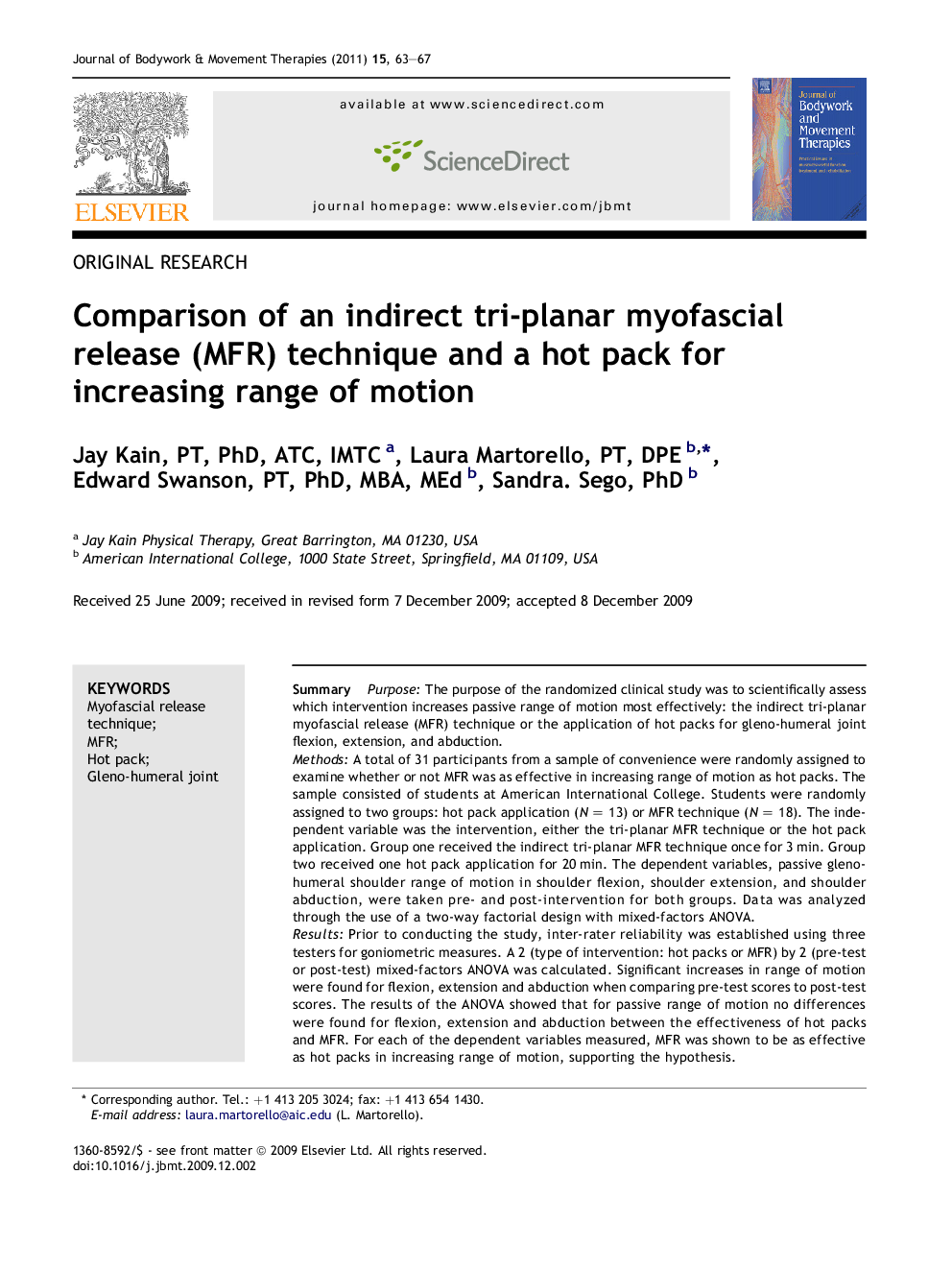| Article ID | Journal | Published Year | Pages | File Type |
|---|---|---|---|---|
| 2619457 | Journal of Bodywork and Movement Therapies | 2011 | 5 Pages |
SummaryPurposeThe purpose of the randomized clinical study was to scientifically assess which intervention increases passive range of motion most effectively: the indirect tri-planar myofascial release (MFR) technique or the application of hot packs for gleno-humeral joint flexion, extension, and abduction.MethodsA total of 31 participants from a sample of convenience were randomly assigned to examine whether or not MFR was as effective in increasing range of motion as hot packs. The sample consisted of students at American International College. Students were randomly assigned to two groups: hot pack application (N = 13) or MFR technique (N = 18). The independent variable was the intervention, either the tri-planar MFR technique or the hot pack application. Group one received the indirect tri-planar MFR technique once for 3 min. Group two received one hot pack application for 20 min. The dependent variables, passive gleno-humeral shoulder range of motion in shoulder flexion, shoulder extension, and shoulder abduction, were taken pre- and post-intervention for both groups. Data was analyzed through the use of a two-way factorial design with mixed-factors ANOVA.ResultsPrior to conducting the study, inter-rater reliability was established using three testers for goniometric measures. A 2 (type of intervention: hot packs or MFR) by 2 (pre-test or post-test) mixed-factors ANOVA was calculated. Significant increases in range of motion were found for flexion, extension and abduction when comparing pre-test scores to post-test scores. The results of the ANOVA showed that for passive range of motion no differences were found for flexion, extension and abduction between the effectiveness of hot packs and MFR. For each of the dependent variables measured, MFR was shown to be as effective as hot packs in increasing range of motion, supporting the hypothesis.Discussion and conclusionSince there was no significant difference between the types of intervention, both the hot pack application and the MFR technique were found to be equally effective in increasing passive range of motion of the joint in flexion, extension, and abduction of the gleno-humeral joint. The indirect tri-planar intervention could be considered more effective as an intervention in terms of time spent with a patient and the number of patients seen in a 20-min period. No equipment is required to carry out the MFR intervention, whereby using a hot pack requires the hot pack, towels, and a hydraculator unit with the use of the indirect tri-planar intervention, a therapist could treat four to five patients in the time it would take for one standard hot pack treatment of 20 min, less the hands-on intervention of the therapist.
